Making and keeping feathered friends
If you have a bird-filled garden, you know that blue jays can be bullies, tufted titmice hoard seeds, and bluebirds begin checking out nest boxes at the first sign of spring. You may have even seen black-capped chickadees sipping droplets of water from the tips of melting icicles or observed Baltimore orioles guzzling nectar from hummingbird feeders.
There’s no doubt that birds entertain us with their songs, intrigue us with their antics, and earn our respect with their diligent, hardworking behavior.
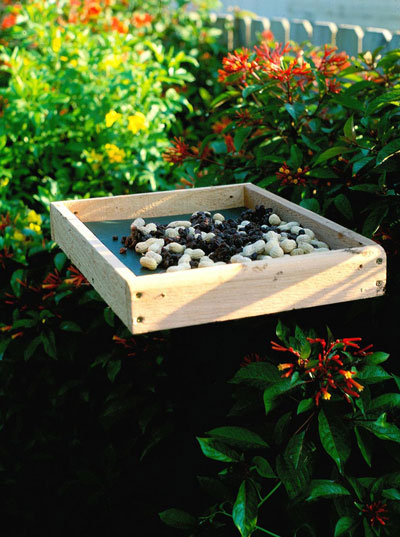
Go nuts! Serve peanuts, grapes, raisins, apple chunks, and other fruits and nuts on platforms or specialized feeders. Photos by Diane Morey Sitton.
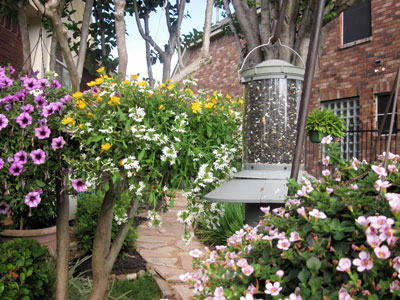
Something to chirp about. Feeders filled with black-oil sunflower seeds attract numerous seed-eating bird species. Hang the feeder within view from a deck, porch, or window.
Fortunately, birds are easy to attract. Start by offering food, especially in winter when nature’s pantry runs low. Cardinals, chickadees, blue jays, sparrows, and woodpeckers number among the seed-eaters that relish black-oil sunflower seeds. Goldfinches and buntings crave thistle. Seed mixes appeal to doves and sparrows. Increase the bird buffet with peanuts, cracked corn, and bits of apples and oranges. Insect eaters savor suet. Appeal to a wide range of bird species by providing low platforms for ground feeding birds and hanging feeders for perching birds.
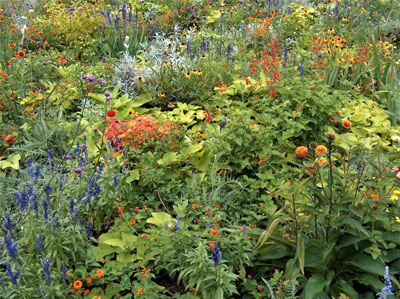
Grow a bird banquet. Attract seed-eating birds by growing flowers that produce seeds. Attract hummingbirds by growing flowers that produce nectar. Visiting butterflies will add to the color.
Add to the bird allure by planting fruit-, nut-, and berry-bearing trees and shrubs along with seed-producing flowers and plants. Hummingbirds seek nectar-rich flowers.
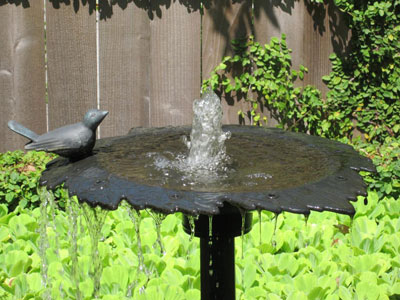
Keep it moving. Birds can’t resist burbling, dripping, or spraying water. Place birdbaths in open, sunny areas.
Water sources, too, welcome birds. Shallow birdbaths, bowls, and saucers filled with clean, fresh water draw drinkers and bathers. Advertise the backyard oasis with moving water: attention grabbers include small fountains, bubblers, misters, and the drip from a faucet. On hot summer days birds enjoy flying through simulated rain showers created by garden sprinklers.
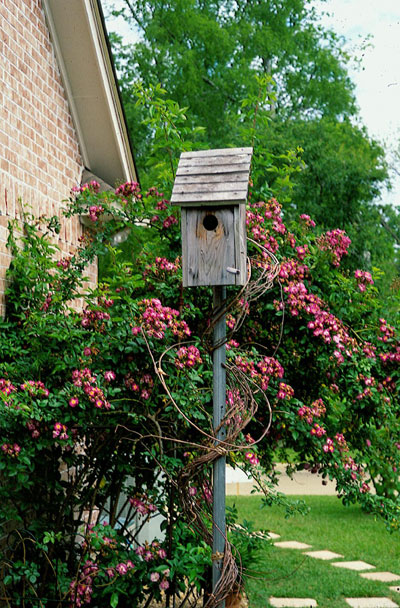
Home tweet home. Attract the most bird species by providing nest boxes that are species specific. Generally, duplexes and triplexes go against garden birds’ territorial instincts. Boxes should be clean and well ventilated.
The list of vibrant, cavity-nesting birds is impressive: bluebirds, chickadees, nuthatches, titmice, and woodpeckers, to name a few. To encourage the greatest array of bird residents, install nest boxes whose dimensions and entrance hole size and placement accommodate different species. And, remember, birds use nest boxes as winter shelter; it is never too early in spring to install them. Birds also value protective havens and hideaways. High perches, dense shrubbery, thickets, and tangles of thorny vines (think climbing roses) heighten their sense of security.
Once you’ve provided food sources, water, nest boxes, and shelter, get ready for wonders of nature to unfold. The birds will do the rest.
